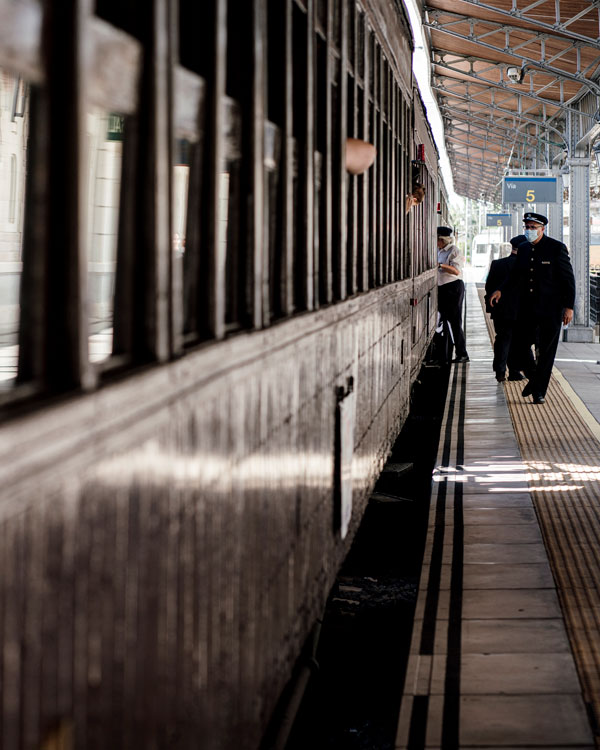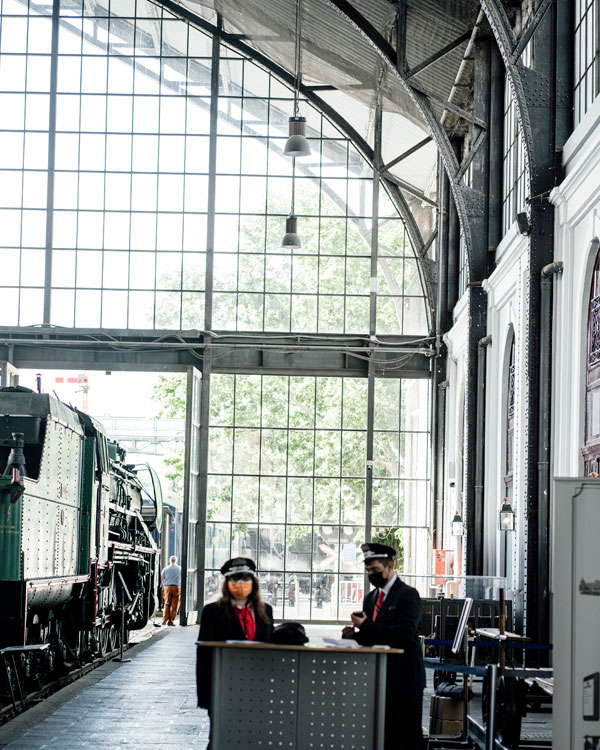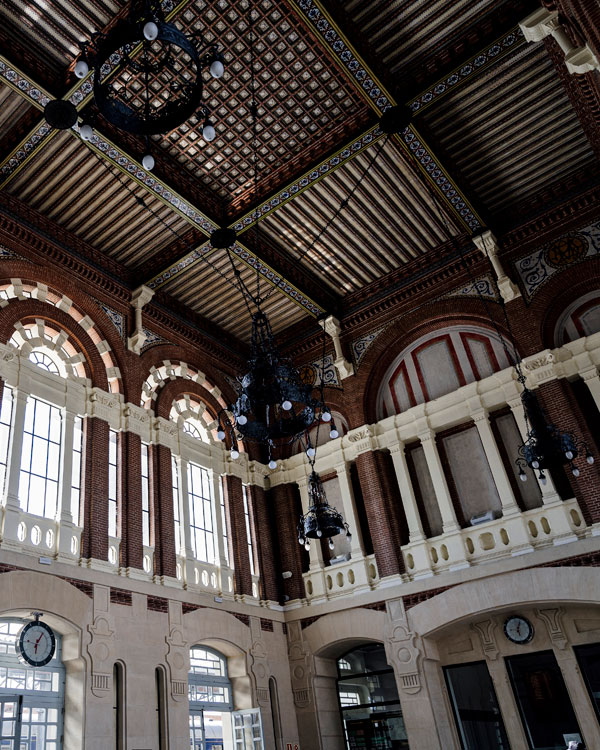
A road of iron
The Madrid-Aranjuez line was conceived as part of a larger
project: linking the capital with the Mediterranean. But
undertaking this project all at once was completely unthinkable
and it was decided to construct this first route. And the
destination of that first section was clear: Aranjuez, the royal
court’s place of stay in the spring.
The inauguration of the new line, fostered by the Marquis of
Salamanca, was held on February 9, 1851, and it was quite a
popular festival, presided over by Queen Isabella II. The line
was 49 kilometers long and its layout is preserved practically
intact. By indication of the Marquis of Salamanca, the track was
extended from the primitive station of Aranjuez to the Puerta de
Damas del Palacio, and legend has it, the last rails are made of
silver.
The entry into service of this second peninsular line was widely
accepted by the population, mainly due to the shipment of
products from the riverside orchard to Madrid, strawberries
being particularly important, the Royal Precincts’ product par
excellence, which gave the Train its name.
On its route, it passes through the towns of Getafe, Pinto, Valdemoro and Ciempozuelos, on a gently descending route that passes from the Manzanares valley to Jarama and the Tagus, with no special factory works other than the bridges that span these three channels.
Stations of departure and arrival: Delicias and Aranjuez
Madrid Delicias: from International Terminal to Museum

On March 30, 1880, the Delicias station was inaugurated.
Initially linked to the railroad project in Ciudad Real, for
various reasons it was the railroad from Madrid to Cáceres and
Portugal that had the privilege of putting this modern station
into service—19th Century-Madrid’s most monumental station and,
paradoxically, today the oldest station in the capital in its
original design. It is a terminus station, the construction of
which followed the project of the French engineer Émile
Cachelièvre, and it has four tracks under a vast metal gabled
canopy 170 meters long, 35 meters wide and 22.5 meters high. Its
entire metal structure was built in Belgium. The service
buildings were arranged on the sides, one dedicated to the
entrance of travelers and the other to the exit. It had the
company's offices, and at its exit, there were company workshops
and garages, all of which have now disappeared. The buildings of
its freight station are still intact, on the north side, but
they are now employed for various non-railway uses. The simple
but elegant brick construction that alternates colors stands
out, with a Neo-Mudéjar aftertaste that was very much in use at
the time.
It had a connection with the railroad from Contorno de Atocha to
Príncipe-Pío, and was the head of the services that connected
Extremadura and Portugal with the capital of Spain. In 1941,
after the Civil War, it was integrated into Spanish National
Railway Network (Renfe), and the successive reforms of the
Madrid railway map meant that in 1969 it ceased to provide
commercial service. Since 1985, it was used as the headquarters
of the Madrid Railway Museum.

Aranjuez station
The first station was next to the Royal Palace, on Raso de la
Estrella. Built in a "U", it was a very modest terminus station
in which the trains with more remote destinations had to reverse
gear. This meant that since the 1880s, a new station was
planned. In fact, a through-track with its own station was
built, closing the triangle of tracks for trains that continued
on the route.
In 1915, the project to build a new station for Aranjuez
resurfaced, however, the works did not begin until 1923. In this
year a new and rather costly building was erected. This new
station, which has changed its location, is a luxurious Neo-Mudéjar
style building, built in a double-height brick factory, and its
impressive hall with a high ceiling stands out with a beautiful
light-filled coffered ceiling from which five wrought-iron ring
lamps hang. Its architect was Narciso Clavería, also the author
of the beautiful Toledo station.
In 1989-90, due to the renovation works carried out, a series of
tiles were uncovered in the underpass of the platforms, coming
from the ceramic workshop of Marigliano (Madrid), which tiled
the aforementioned passageway. Both in that step and at the
bases of the pillars of the marquee and the ceramic decoration
of the lobby, the intertwined initials of MZA are repeated".